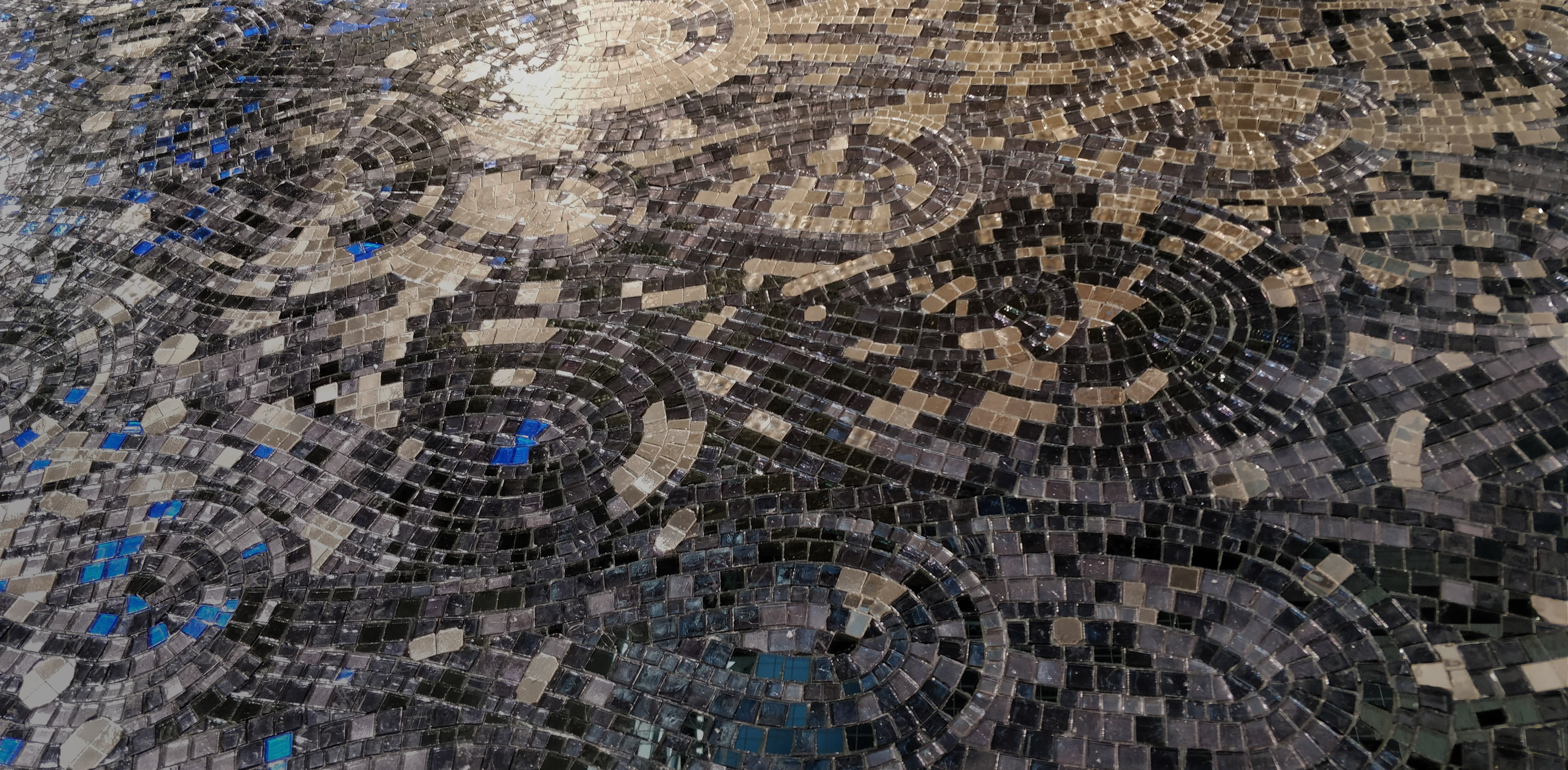Thousands of architects and designers strolled through the porticos of Bologna last week, taking in the city’s towers and terracotta roofs ahead of one of the construction industry’s most vibrant exhibitions. Cersaie is arguably the world’s most important tradeshow for architectural tile products, and remains the premier place for global ceramics manufacturers to showcase their newest creations. From delicate mosaics and decorative tiles to resilient pavers and vast porcelain slabs, Cersaie has it all.
Italian investment in this industry leapt last year to more than €500 million, as the country looks to stay one step ahead of global competitors — most notably China — and continue its reputation as the world’s top producer of ceramics for architectural applications. Italian tile manufacturers now export some 85% of everything they produce, with American sales increasing to an all-time high. The growing interest among US architecture firms in tile as a material for both residential and commercial use has spurred unprecedented research and development in the sector.
But with so many tile products now available, how are the leading brands differentiating themselves? We explored the show to identify some of the hottest tile trends this year, highlighting manufacturers that continue to set the benchmark for innovative architectural ceramics.
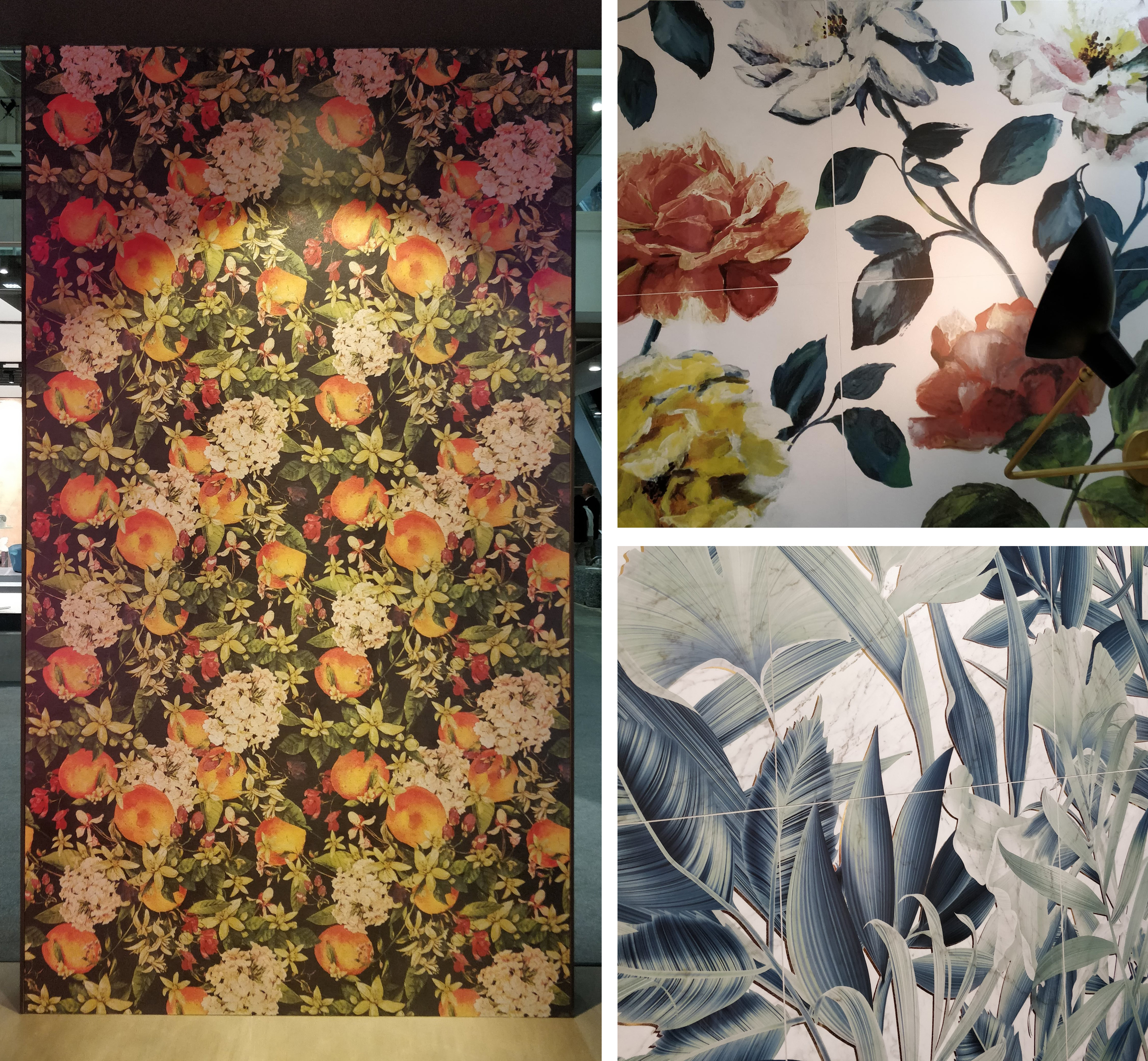
left: The Dark Edition Ceramic Wallpaper by ABK; top right: Eclettica decorative tile by Marazzi; bottom right: Piemme and Valentino’s decorative tile with plant life and gold accents
Ceramic Wallpaper
ABK stole the show with a booth full of stunningly detailed decorative slabs, heralded as “ceramic wallpaper” by the brand. Named the Dark Edition, the collection boasts a subtly textured matte finish that accurately recalls that of real wallpaper. Each option in the series possesses vivid illustrations of flowers and fruit on rich, dark backgrounds, following in the footsteps of contemporary fashion trends. The collection was one of the most photographed in the show, aided by ABK’s unique hashtag #ABKDarkEdition.
A number of other brands showcased decorative tiles sporting the kinds of patterns traditionally associated with wallpaper. Piemme’s collaboration with fashion giant Valentino includes a decorative tile featuring luscious plant life, while Marazzi’s varied Eclettica collection included tiles with large flowers that appear mottled, as if painted with water-colors. Finally, Ornamenta’s Operae collection features a large decorative 48” x 96” tile named Domestic Jungle, covered with vivid ferns in bold, gradient colors.
Whether these tiles will emerge as a mainstream alternative to wallpaper remains to be seen, but their resilience and fade-resistant qualities will make them tempting options for designers of boutique hotels, commercial lobbies and restaurants.
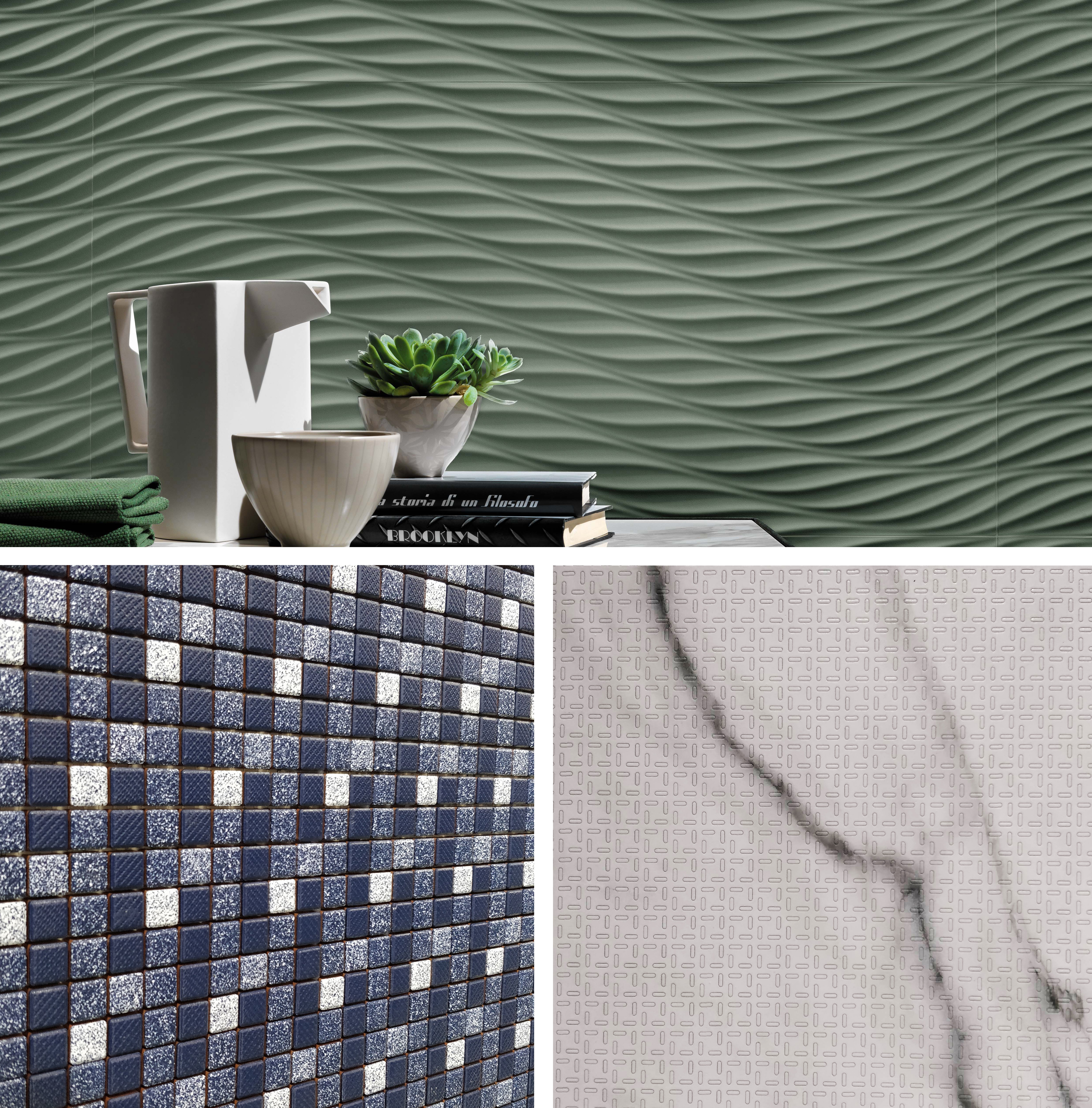
top: 3D Twist by Atlas Concorde; bottom left: Denim by Appiani; bottom right: Filigrane by LEA Ceramiche
Next-Gen Textures
After many years of experimentation, Italian tile manufacturers are now well-versed in the art of creating complex textured surfaces. Cersaie 2018 brought with it a series of new textured and 3D tile designs possessing more refined, subtle surface variations than in previous years. Appiani debuted Denim, a mosaic possessing the distinctive tones and textures of the famous fabric. As the company notes, the series possesses “the essence of yarn used to make jeans” and is represented in three patterns — Streaked, Wavy and Ruled — cleverly echoing the variations found in denim itself.
Atlas Concorde expanded its popular 3D Wall Design series to include its striking new Flake and Twist textures. According to the brand, 3D Twist was inspired by “the braided ropes of moored boats” featuring “small, three-dimensional ripples that change direction, creating an interplay of light and shadow”. Meanwhile, LEA Ceramiche unveiled Filigrane designed by Philippe Nigro, an tile that sees deliberate, regular indentations overlaid with the natural veining of marble. According to the brand, the unusual hybrid aesthetic of Filigrane “creates a dialogue between markings and material, geometry and geology, the precision of design and the unpredictability of colors and veining.”
Finally, Ceramica Vogue displayed a stylish set of glazed stoneware tiles entitled Dekorami, created by Torino-based design studio Marcante-Testa. The brand explained: “Despite its contemporary language, [each Dekorami tile] uses simple geometrical shapes that bring to mind decorative elements from the past, as suggested by their three names – Kolonne, Koriandoli and Kodici.” Every design in the set is available as a 10”x10” square tile, with five glossy colors and three satin-finish colors offered.
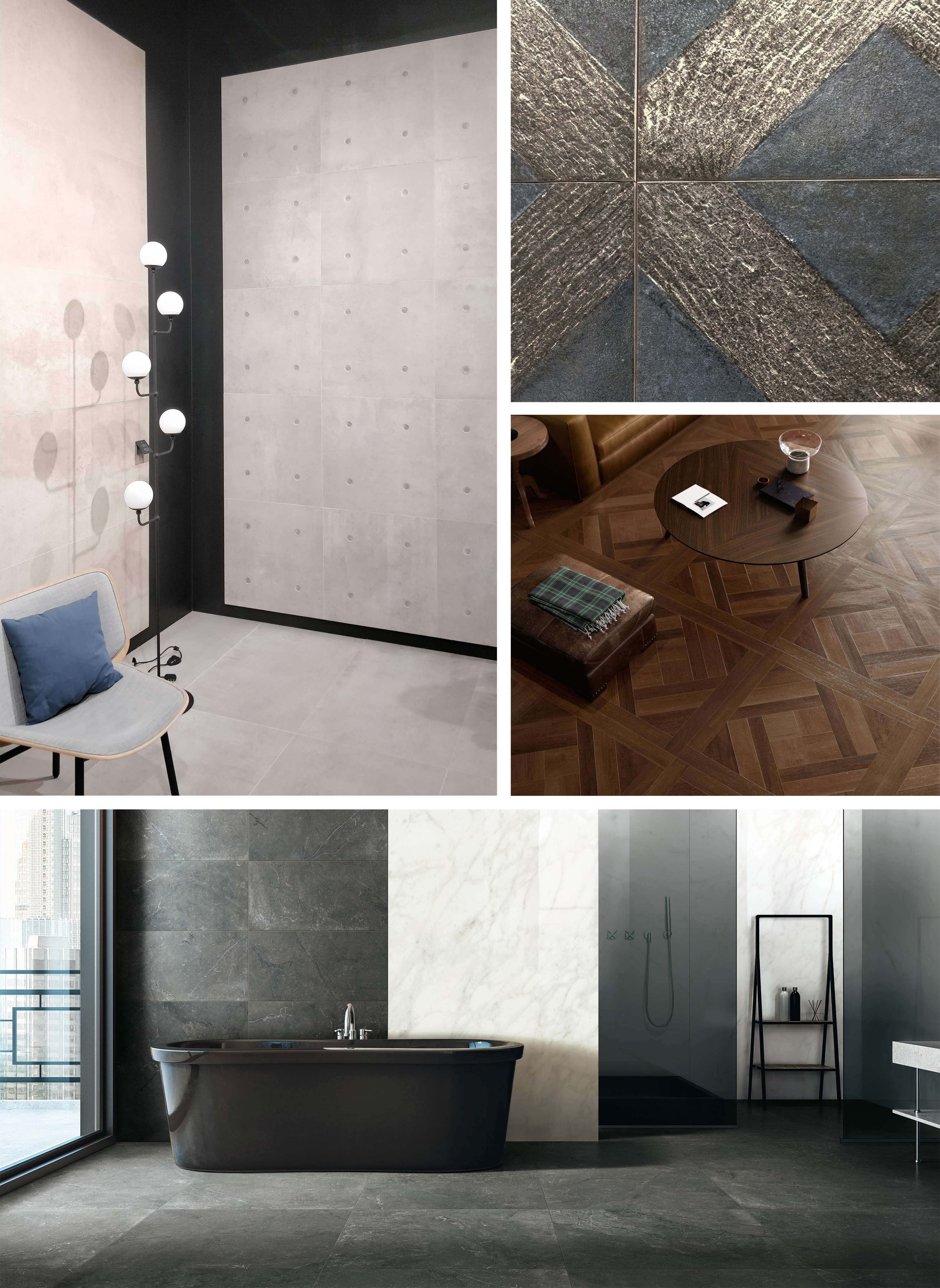
top left: Dot concrete-look tiles by Ceramiche Fioranese; top right: Yaki collection charred wood-look tiles by EmilGroup’s Viva brand; middle right: Lakewood oiled wood-look tiles by Ceramic Sant’Agostino; bottom: STONETECH 4.0 tiles by Florim
Raw Material Magic
Cersaie 2018 also showcased a number of ceramic takes on raw architectural materials. Perhaps one of the most provocative new releases at the show was Dot, launched by Ceramiche Fioranese and designed by architect Andrea Maffei. Designed to make the look of raw concrete more accessible to everyone, the tile accurately mimics the material and comes complete with “tie hole” indentations. Tadao Ando fans, take note.
There were dozens of timber-look tiles throughout the exhibition, but one of the highlights was the Yaki collection by Emilgroup’s Viva brand. In particular, one textured tile closely imitates the rough, charred wood finish achieved through the Japanese process of shou sugi ban. By contrast, Ceramic Sant’Agostino unveiled its Lakewood series, a rich, oiled wood effect collection that channels the “precious essence of American woods”, according to the brand. The 8” x 47” planks have softly beveled edges and a slight shine that accurately evoke oiled wood.
Among the many marble-effect porcelain slabs, standout products included Emilgroup’s Marmi Calacutta slabs, with highly realistic veining, and Marazzi’s 125” x 63” Grande tiles, which the brand claim to be the largest porcelain slabs available on the market today. The company also uses “sinking ink” technology to create an authentic marbled look. Finally, Florim’s STONETECH 4.0 series expands the brand range of high quality stone and marble-look slabs with six new finishes, suitable for a diverse range of interior and exterior spaces.
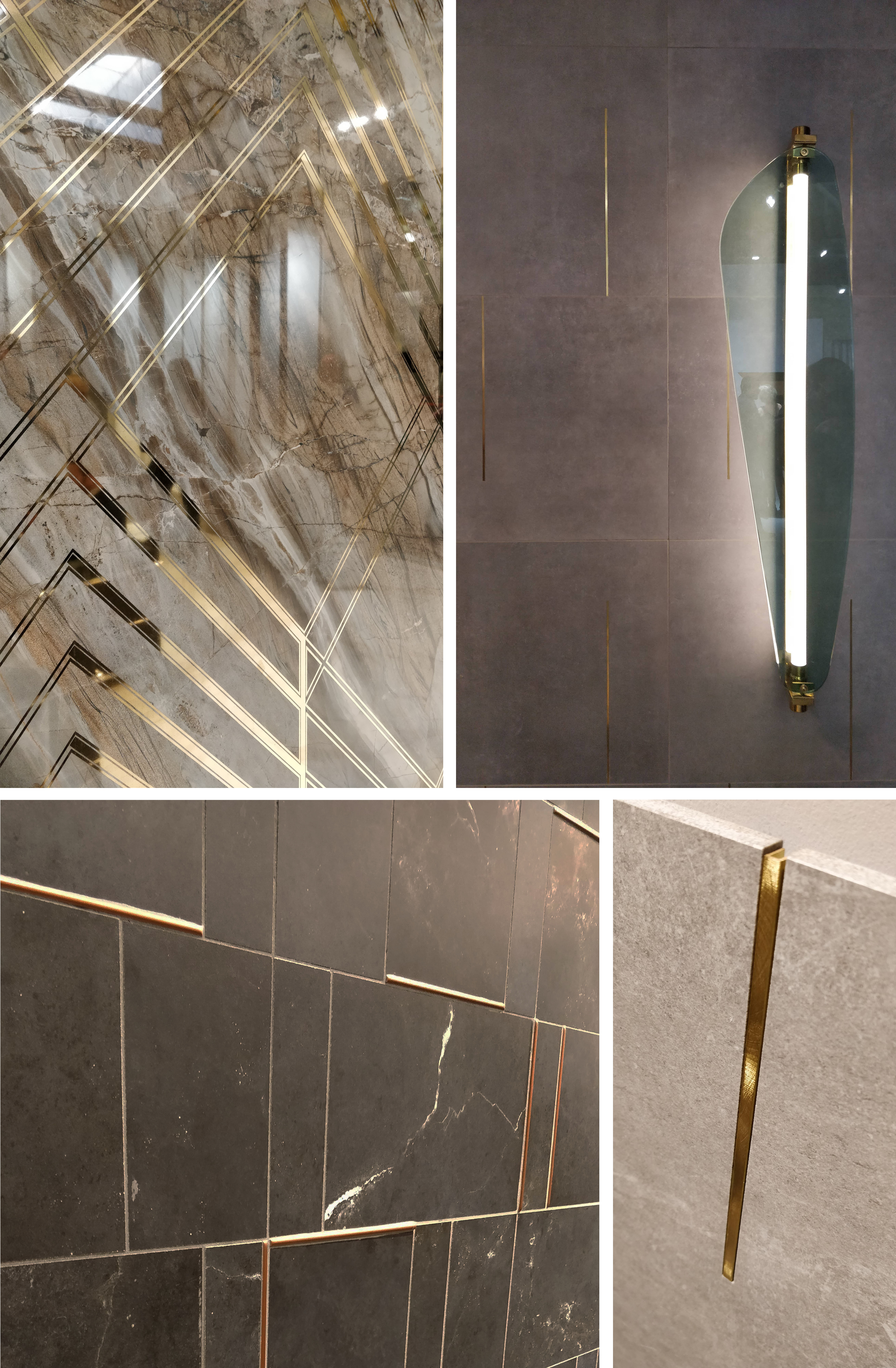
top left: Monocibec’s Transalp collection features real gold accents; top right: LINES by Ceramica Bardelli; bottom left: Stardust tiles by Ceramiche Refin with brass strips; bottom right: gold strip detail by Marca Corona
Gold Rush
Among huge expanses of marble- and wood-effect slabs, multiple brands showcased metallic accents, strips and glazes to catch attentions and bring a touch of glamor to proceedings. Marazzi showed off its Mystone collection, including decorative tiles with metallic luster glazes. Part of the Fincibec group of manufacturers, Monocibec‘s Transalp line features rich marble-look slabs with real gold accents. Meanwhile, Ceramica Bardelli’s LINES collection features rectified porcelain tiles with a rough, cement-like quality, each embedded with a brass strip to add a precious element to each tile.
Ceramiche Refin’s standout collection was named Stardust, inspired by contrasts and brightness of the starry sky”. The surfaces feature an intertwining of tone-on-tone veins and subtle reflections created by a luster that offers an elegant metallic effect when touched by light. For further embellishment, optional gold and copper strips can be slotted between the collection’s 15” mosaic panels. Marca Corona also offers a golden “insert” for its newest series of Mementa tiles.
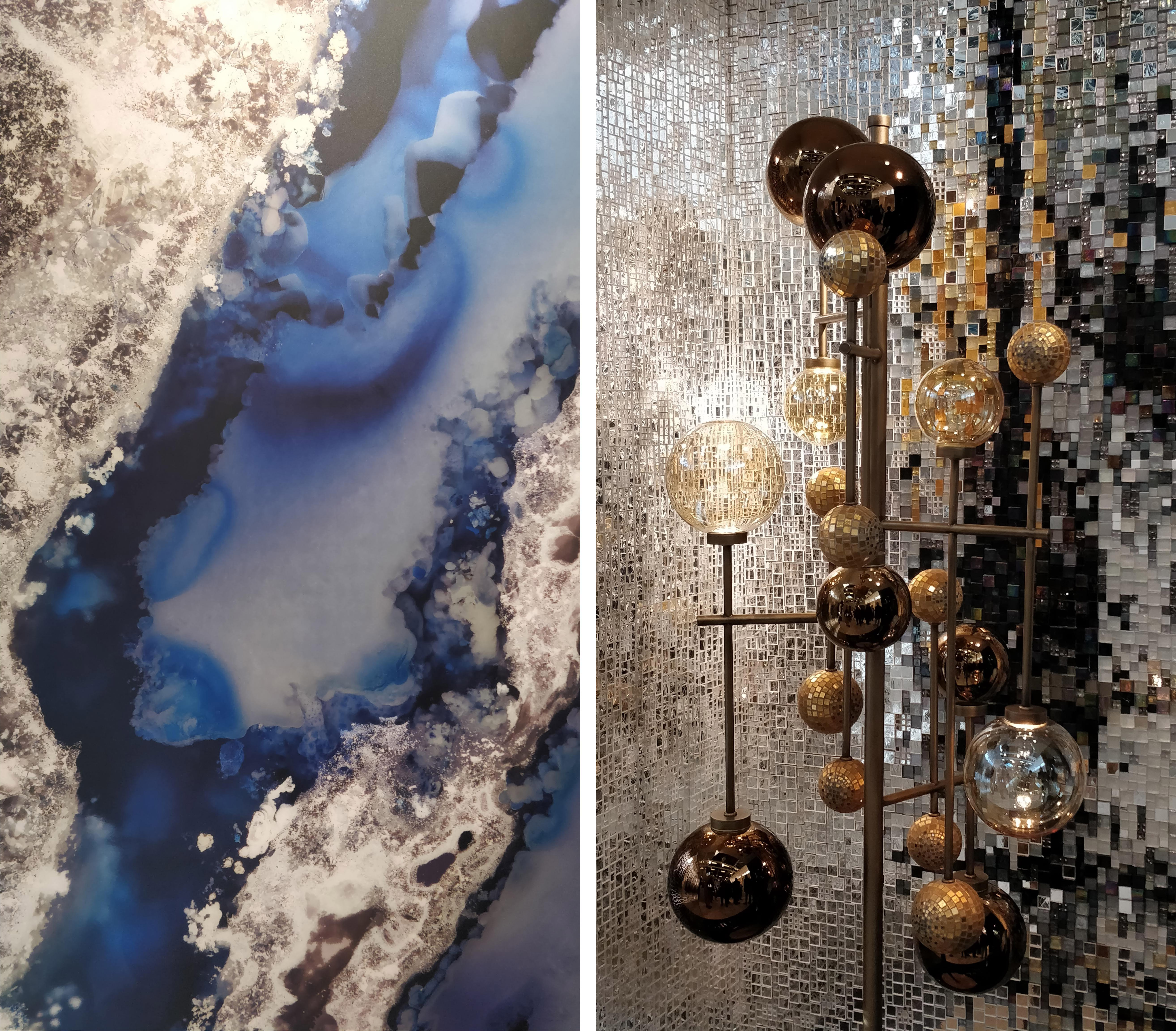
left: Vetrite Gem Glass by Sicis; right: Structura mosaics by Sicis
Color Crush
A final word on Sicis, the innovative mosaic manufacturer that took home the award for most colorful booth at this year’s show. It was hard to look away from the brand’s new Vetrite Gem Glass series, which features backlit panels of safety glass sandwiching polymer film reminiscent of sparkling geodes. Sicis’ Structura mosaic series is bolder still, its tiny, jewel-like tiles offering interior designers the chance to transform bathrooms, kitchens and lounges into glittering treasure caves.
Together, the manufacturers at Cersaie demonstrated just why Italy is the epicenter of architectural ceramics — but without the grandstanding of years past. Brands are making improvements to their product lines in increasingly subtle ways, aiming to catch attention with nuanced textures and patterns rather than pure scale and glamor. As a result, Cersaie was a show perfect for people with a keen eye for detail — and that includes just about every architect in the world. For design professionals departing Bologna, the words “tile” and “style” have never been more synonymous.
Research Ceramic Manufacturers
Architects: Find the perfect materials for your next project through Architizer. Manufacturers: Sign up now to learn how you can get seen by the world’s top architecture firms.
